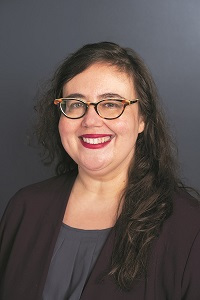One Step Forward | Editorial
On November 7, Pfizer announced interim findings of a 90 percent effectiveness rate for its SARS-CoV-2 vaccine. On November 16, Moderna announced a similar interim finding of 94.5 percent effectiveness. While there are cautionary notes—these are the companies’ numbers, not the FDA’s, and at press time the trials were not yet complete—it is still a hopeful sign that the most stringent measures to contain community spread may be behind us by 2022. Yet the right-now coronavirus news is grim.
Control COVID until there's a vaccine
 On November 7, Pfizer announced interim findings of a 90 percent effectiveness rate for its SARS-CoV-2 vaccine. On November 16, Moderna announced a similar interim finding of 94.5 percent effectiveness. While there are cautionary notes—these are the companies’ numbers, not the FDA’s, and at press time the trials were not yet complete—it is still a hopeful sign that the most stringent measures to contain community spread may be behind us by 2022. I am deeply looking forward to meeting again in person someday.
On November 7, Pfizer announced interim findings of a 90 percent effectiveness rate for its SARS-CoV-2 vaccine. On November 16, Moderna announced a similar interim finding of 94.5 percent effectiveness. While there are cautionary notes—these are the companies’ numbers, not the FDA’s, and at press time the trials were not yet complete—it is still a hopeful sign that the most stringent measures to contain community spread may be behind us by 2022. I am deeply looking forward to meeting again in person someday.
Yet the right-now coronavirus news is grim. As I write this, the U.S. daily new case count has doubled in the past two weeks, to more than 180,000 on November 13. This is a lot more than two steps back.
Health-care professionals now have more tools and know more about how to treat COVID-19, which has thankfully meant that death rates have not climbed as fast as cases. And libraries know more about how to mitigate contagion, thanks in part to the REALM project. Plexiglass, six-foot spacing reminders, face coverings, time limits, reduced capacity, and hand sanitizer are commonplace.
Unfortunately, not enough else has changed since I first wrote “Close Your Library” in March. We still don’t have a strong national strategy. We still don’t have robust contact tracing. We still don’t have a second stimulus package. It is not looking likely that we will get any of those things until the New Year at the earliest, if then.
Moreover, as the science progresses, some of the rules of thumb we have relied on are being called into question. Sometimes that’s for the better, such as the evolving consensus that wearing a mask protects you, not just others, and that masked outdoor activity is low-risk. But as the focus has shifted from surface transmission to droplets to aerosols, our reliance on six-foot distancing is starting to look insufficient. Once winter cold sets in and makes outdoor service and open windows impractical for many, effective filtration and air exchange will be even more crucial—look for a feature on HVAC to protect against COVID-19 transmission in the January 2021 issue.
Meanwhile, changing guidance—however important and appropriately driven by new data—can contribute to not only public fatigue and confusion with inconsistent rules across time and jurisdiction, but to what has become, in some places, an entrenched culture of resistance to public health measures, often on politicized grounds. As a result, patrons’ refusal to comply with safety regulations puts library staff in a stressful, often dangerous, position.
As the end is in sight, it is all the more important for us to slow the spread and again “flatten the curve.” Day by day I see some libraries going back into early phases of their pandemic plans, sometimes all the way to full facility closure, while others are still opening up. Though these decisions are quintessentially local, I urge library leadership to be guided as much as possible by the current science in making these choices—even if that makes them outliers in their communities.
Amid the din of emotional exhaustion, accusations of overreacting, worry about patrons left unserved, fear of coming budget cuts, and plans based on what we knew six months ago, it can be hard to hold on to that goal—doubly so when political infighting has called traditional gold standard sources like the CDC’s guidance into question. But finding the right information has always been in the library wheelhouse.
The bigger challenge, one we are grappling with in many areas, is how to effectively convey that information to an audience of patrons who have been targeted with deliberate disinformation, and how to stand firm for the facts in a climate in which that has been reframed as a partisan position. I have no pat answer to that, but I believe it has to start with libraries leveraging their trusted position to model what they want to see in the world.
Today, that means stay as safe as you can. Stay home as much as you can. Stick around to get that shot (or two), so we can come back together and continue the discussion on the other side.

RELATED
ALREADY A SUBSCRIBER? LOG IN
We are currently offering this content for free. Sign up now to activate your personal profile, where you can save articles for future viewing









Add Comment :-
Comment Policy:
Comment should not be empty !!!